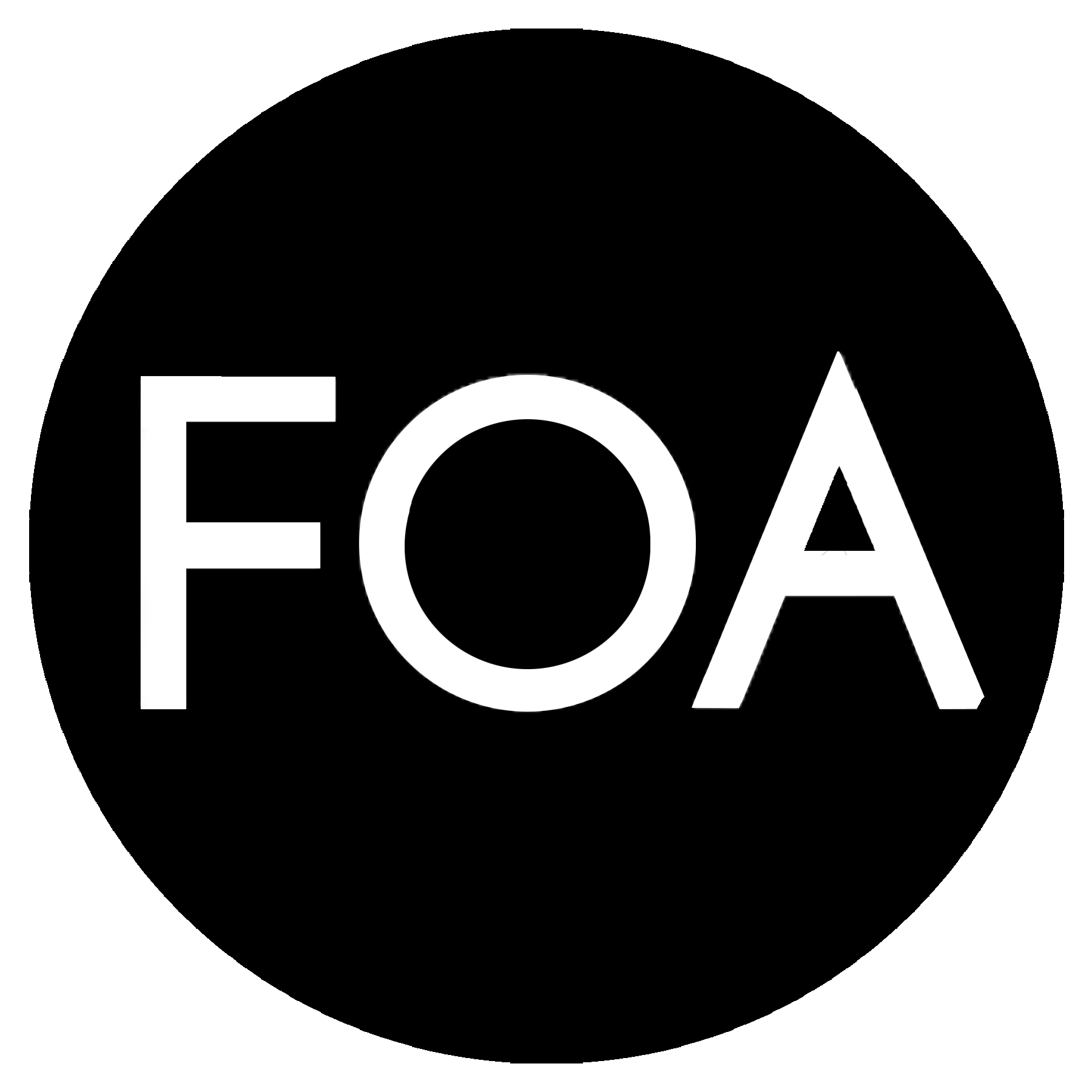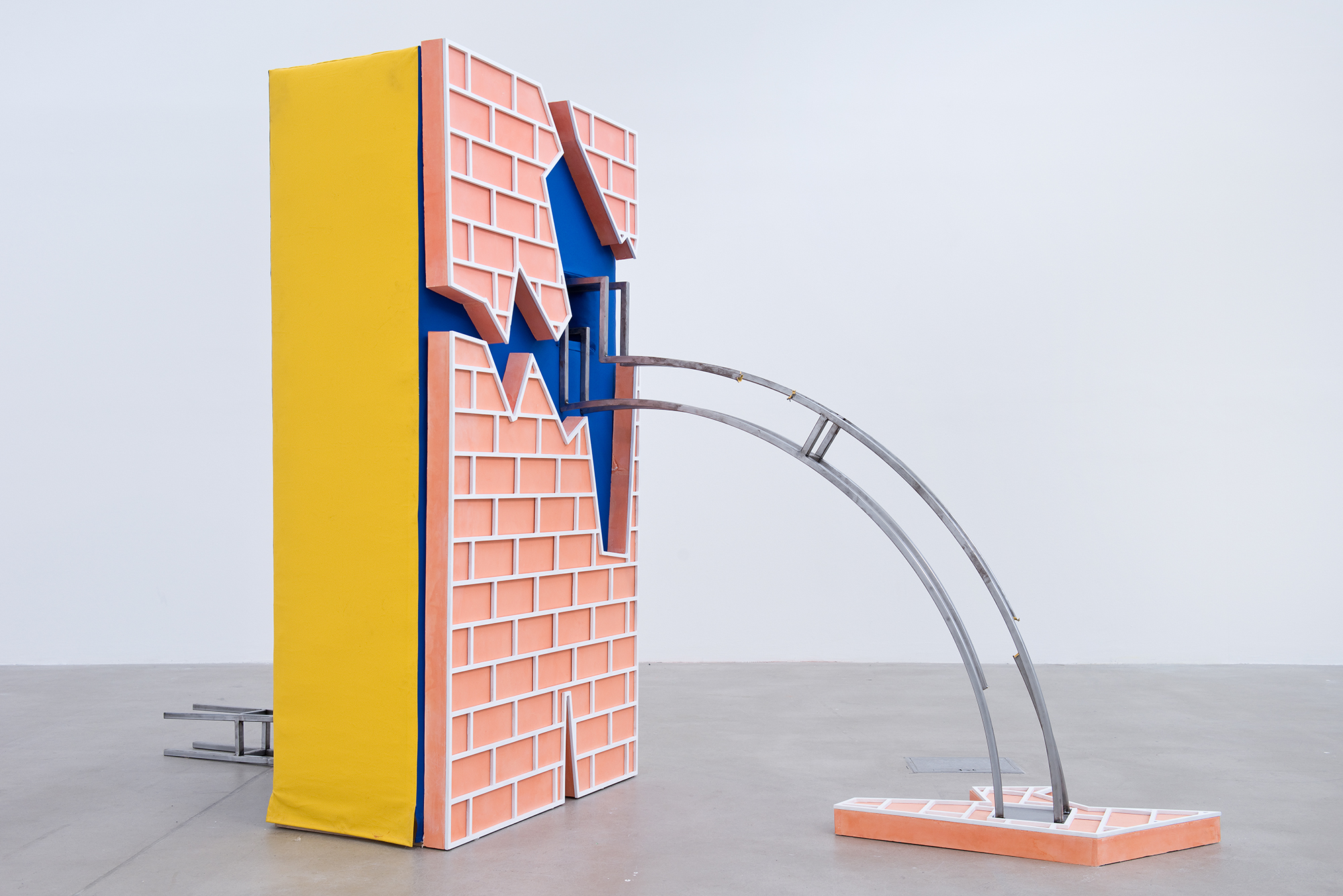Interview with Liam Fallon
Liam Fallon
Use your muscle, carve it out, work it, hustle, 2017
Steel, jesmonite, MDF, PU, and primer
1830 x 900 x 1200 mm
Liam Fallon was born in 1995 in Stoke on Trent and lives and works in Manchester. His recent exhibitions include ‘Exchange Rates’, Bushwick, New York, ‘Bought Objects’, Voidoid Archive, Glasgow, 'The worst seats in the house', SET, London and 'Beginnings', National Assembly, Seoul, He graduated from Manchester School of Art in 2017, winning second place (the Lim Ai Fang prize) in the Woon Foundation Prize 2017 as well as winning the Alumni Prize and the Manchester Academy of Fine Arts prize.
Interview is between artist and Natasha Areslan who is the founder of AucArt, an online auction house dedicated to emerging artists. Originally published in Volume 7.
NA: Describe your work in one sentence.
LF: That’s hard! My work uses form and materiality to explore notions of queer culture, particularly the more sentimental elements which unfold and are played out between private and public space.
NA: When you arrive to your studio, what’s the first thought you have?
LF: Always coffee! I grab one on the way to the studio, sit for 5-10 minutes in which I think and set out what I need to do, this usually consists of emails, CAD drawings and continuing with various pieces but I try to get the things that need a lot of concentration done first thing as to avoid losing my patience. In general, I’m pretty obsessed with routine as I’m really superstitious so everything runs like clockwork and just generally enables me to keep on top and in control of everything.
NA: What is on your mood/inspiration board at the moment?
LF: In terms of objects/imagery, a lot of them are prosaic but contain something which I’m really drawn to as a symbol and also kind of predicting its story if that makes sense? a few examples are belly buttons, piercings, wood grain, Yves Klein blue, horse saddles, zips, pigeons…it really varies! In terms of writing as a form of inspiration, I’ve been reading a lot of Baudrillard recently on Simulation and listening to podcasts to try and break some things down, but this is still a work in progress. I also recently read Robert Gobers essay in ArtForum in which he compares Carl Andre and Donald Judd. He spoke about Donald Judds work being emotionally complex as well as having a masculine bluff about it. This as a point made me really think about my own work and the contexts that the work naturally picks up through the material manipulation and through the intention of mine to simulate experiences and represent this through the sculptures that I make.
NA: Since leaving art school how do you see your practice changing?
LF: I think I’ve learnt to stay with a piece of work/a train of thought for longer. When you’re at art school, there are so many contributing factors which really causes you to speed your rate of production up and before I had even finished a piece of work I was thinking about the next one. Since leaving, I have been able to reflect on a lot of my research and actually pin point the reasons to why I'm drawn to certain things and to be able to confidently pin point what I’m trying to do and I’ve done that by staying with an idea and not seeing the completion of a piece of work as the completion of an idea- it can be pushed for as far as you want to push it.
NA: Is there a specific place in the world that inspires you?
LF: The history of gay rights in New York and the means to which the community continued its survival during the 60’s 70’s and 80’s particularly inspires me and the work that I make. My work doesn’t directly reference New York as much as it previously did, however learning about and visiting certain areas really enabled me to draw up some interesting points of discussion with in my work which is really apparent now and probably will be for quite some time- this idea of private and public is of particular interest.
Another place that I went to which inspired me with some visuals was South Korea, I have so many photos on my phone of different things that I saw which were completely mundane but completely fascinating. They had brick walls which had patterns engraved into the surface- flowers, woodgrain, drawings. These photos really made me consider the surface of the work.
NA: If you could swap an artwork with any artist you wanted dead or alive, who would it be and what artwork would it be?
LF: Hmmmm, I recently came across ‘Par Une Belle Fin D’apres Midi’ by René Magritte which I really like so I’m going to say that! Otherwise, I think I’d have one of Paul McCarthys inflatable pieces- I think they’d deter anyone from attempting to burgle the house.
NA: Do you have a playlist you listen to while you’re working?
LF: I don’t have a playlist as such but I tend to play a lot of podcasts when I’m working as they’re really easy to listen to and if you drift off, you can usually find your place quite quickly. The podcasts that I listen to are ‘strangers’, desert island discs and the New Yorker Fiction podcast.
In terms of music, I tend to listen to a lot of aphex twin as its quite repetitive and I find it a lot easier to stay focused on something due to its repetitiveness. But again, this varies massively.
NA: You will open your first solo show next year at The Turnpike which was opened in the 1970’s as a gallery built for sculpture, the first exhibition to be held there was by Henry Moore and Barbara Hepworth and other artists to have shown there include Picasso, so historically, it has had some really historic shows… Are you conscious of how you want your viewers to feel/perceive your work/ what we will take away with us?
LF: The main thing for me is that its relatable. Due to the location of the gallery and the viewers that will directly engage with the show, it would be completely pointless to create a body of work that needs a particular level of knowledge to access it. The phenomenology of our day to day lives and in particular, relationships have become a particular focal point for the research surrounding the exhibition and due to the basic foundations of the human condition, this is instantly more relatable. I think for me, some of the best exhibitions that I have seen/pieces of work that I have seen, are the ones that contain something which encourages you to revisit something from your past and for a small moment, relive it. Each of the pieces represents a stage in a framework that unfolds as the viewer moves through the space, so by visiting the exhibition, I want people to consciously reflect on their own experiences by using my work as a catalyst to do so.
NA: What are you most excited or nervous about?
LF: There are some really exciting pieces that I’m currently working on that will be the biggest works I’ve made to date and this is something which really excites me- this level of ambition.
In terms of the exhibition itself, I think I’m really excited to see it all installed and just have that moment with the works and with Matthew Retallick (the curator) there too. This exhibition is a product of such a long and rich conversation, so it will be great to share that with him too. In regard to being nervous, I think I’d be lying if I didn’t say I was nervous about its success.
NA: For all the artists going through art school right now - If you could give one piece of advice - what would it be?!
LF: The best piece of advice I was given was to not question why you’re doing something. You don’t have to explain your reasoning to anyone, but instead to question WHAT it is. I think as soon as you can decipher what something is, it begins opening the doors to the next pieces. Another piece of advice that I didn’t get until I left uni and actually came from you in London a couple of months ago, was to never compare your rate of production to that of others- what you see from others is just the surface- people have a million of different things going on in their lives which can influence the rate of/lack of production of work and that is absolutely fine.

